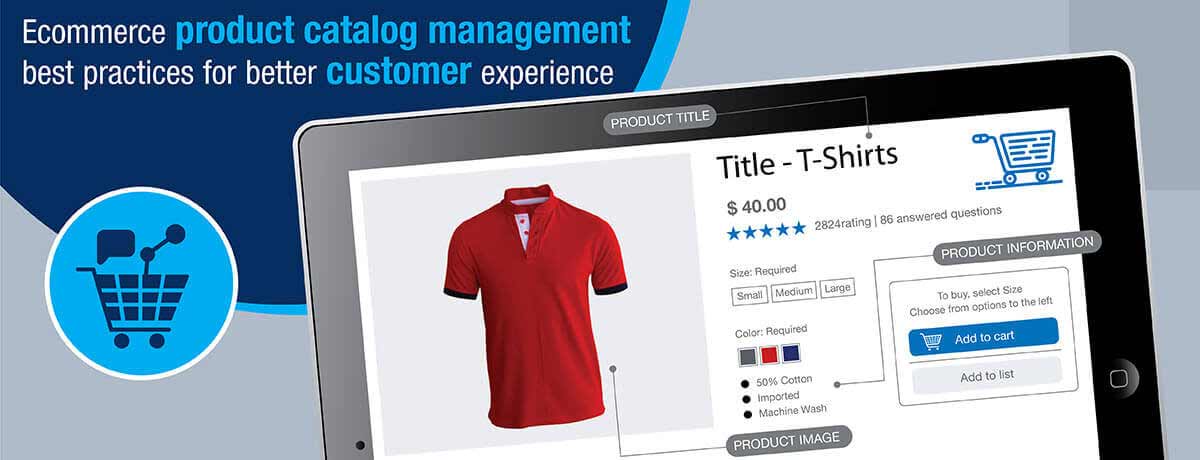Optimized product catalogs are pivotal to enhanced customer experience (CX) and quick purchase decisions. Focus on creating accurate and updated product descriptions, engaging visuals and agile interfaces increases the win ratio of your catalogs.
Ecommerce sales are expected to surpass $4.8 trillion by 2021 and $735 billion by 2023. 95% of all purchases will be made online by 2040. Are you ready to grab 21st-century opportunities offered by the eCommerce industry? Are you equipped with effective eCommerce product catalogs to improve customer experience, and convert traffic into sales?
For eCommerce players, lower conversion and higher return rates resulting in poor customer experience are the prime challenges; and not competition. Stats suggest that only 2.86% eCommerce traffic gets converted; whereas 30% of products purchased online are returned, making customers dissatisfied.
An analysis of business performance at Amazon showed the direct connect between return of products purchased online and products with poor catalog descriptions, details and photos.
Can optimized product catalogs improve customer experience (CX)?
Ecommerce product catalog management is pivotal to efficient identification of products and faster product discovery. Optimizing eCommerce catalogs helps in theme-based bucketing, cross-selling, and up-selling.
69% of visitors buy from eCommerce sites that answer questions about the product, and 9 out of 10 visitors will buy a product if it is visually represented well in the catalog. These numbers tell us that quality catalog improves customer experience and turns traffic into sales.
8 best ways to optimize ecommerce product catalogs for better CX
1. Real-time product data update

“Out of Stock” notification can dissatisfy customers and can finish an entire eCommerce business. Cent percent fulfilment of consumer demands is an opportunity for e-retailers; however, it is really challenging for them to update product data in real-time.
Instances when an eCommerce platform fails at delivering what was promised, customers connected on social media may publish remarks that damage the brand; and the result is lost customers and revenue. Marketplace like Amazon and Alibaba impose penalties in case your products get out of stock; and scenario deteriorates if customers complaint about it. Keeping product data updated on real time basis is critical for online sellers.
Workflow designed and implemented for real-time data entry of product details in 36 fields, from images in 550 various angels for 1000 plus food products helped the customers of e-retailer make informed decision while buying food products.
Read the case studyAutomated product data update in real time helps online sellers assess exact days during a month, or a year or the precise time in a day when their products are in high demand. Leveraging automated systems helps online retailers to acquire products well in advance, avoid out of stock situations and gain a competitive edge.
2. Standardized images that match your brand

Product photos are an imperative to sell online. HD quality and zoomable product images compel your customers to take your brand seriously. No need to spend a lot on product photography; instead you can take assistance of professional photo editing services. They edit your product images to make them worthy of establishing and maintaining your brand reputation.
Consider these aspects to standardize product photos:
- Cropping and straightening
- Background removal
- Lighting and consistency
- Color correction
- Shadow manipulation
- Batch process corrections
- Image sizes and compression
Adjusting the light, shape and color of 20,000 product photos enhanced the appeal of products and sales for an Ecommerce Portal in UAE. As thumb rule the main parts of the product images were kept sharper and brighter.
Read the case studyAssess the culture of your company, target audience, their demographics, etc., before initiating the product photo shoot and editing them. Instagram is a classic example of standardized look and feel of product images. You can take help of professional eCommerce photo editors to finalize the style, tone & perspective of your product photos.
3. Centralized product data repository

Here are some items that make maintaining product data repository a challenging task.
- 9,998 taxing jurisdictions in the USA
- Adherence to product safety guidelines of different county, state and country
- Match contract specific pricing for a set of customers
- Keeping tab on inventories
- Maintaining shipping logistics
- Separate product prices during eCommerce sale
- Supplier information including SKUs
It is nearly impossible for any human to record, manage and maintain all these aspects of a product accurately, along with product details, product descriptions and product prices.
Product Information Management Systems helps in having and managing a centralized product repository. It amasses information about every product or item that is on sale and complimentary items to be sold along.
PIMs are repository for details including:
- Product name
- Product category
- Product description & pricing
- Product IDs – SKUs
- Product sub-category
- Inventory status
- Shipping and handling
- Suppliers & taxation
Product Information Management Systems – PIMs, can be leveraged for product data and descriptions, items clubbed with products for up-sale and cross-sale of other products. Catalog management solutions are equipped with features to collect product data, as well as manage and enrich it.
Central product repository empowers you with a consolidated product catalog; accessible to all your sales and eCommerce channels. It makes your brand customer centric. Accurate, consistent, and compliant product data is the key to creating rewarding CX.
Product information is key to ecommerce success
Want to give your e-shoppers the exact product information?
Talk to us today »4. Accurate and consistent product descriptions
 Image Source: sumo.com
Image Source: sumo.com
30% online shoppers expressed their willingness to buy from an online retailer, from whom they never purchased previously; if their catalogs had informative product descriptions.
Once the consumer finds your product easily, following-up with a detailed, informative, accurate, and consistent product description ensures that visitors buy the exact product they need. High quality listings can lead to more sales.
3-step product description model:
- Complimentary comments about customer and product
- Highlight product benefits that compliment product features
- Quick and simple recommendations
To sell the hanging lamp, instead of going with generic standard description about the light and the features; here WAYFAIR furniture and home décor started with “Greet guests with a warm and welcoming glow.” It makes their customer promptly imagine hosting a party and this beautiful light hanging above.
Buying products online, without touching or feeling it, or trying it is a tricky task. Customers can’t even read the packaging to know about the product. It is the product description that gives them all the information they need to buy the product.
5. Conduct customer journey mapping
Every online shopper today looks out for personalized and flawless experience. They want their brand to know about their choices and that too across multiple touchpoints. They expect the eCommerce platform to facilitate them to resume shopping from where they left off – without plugging in previous details.
Different layers of your customer journey include:
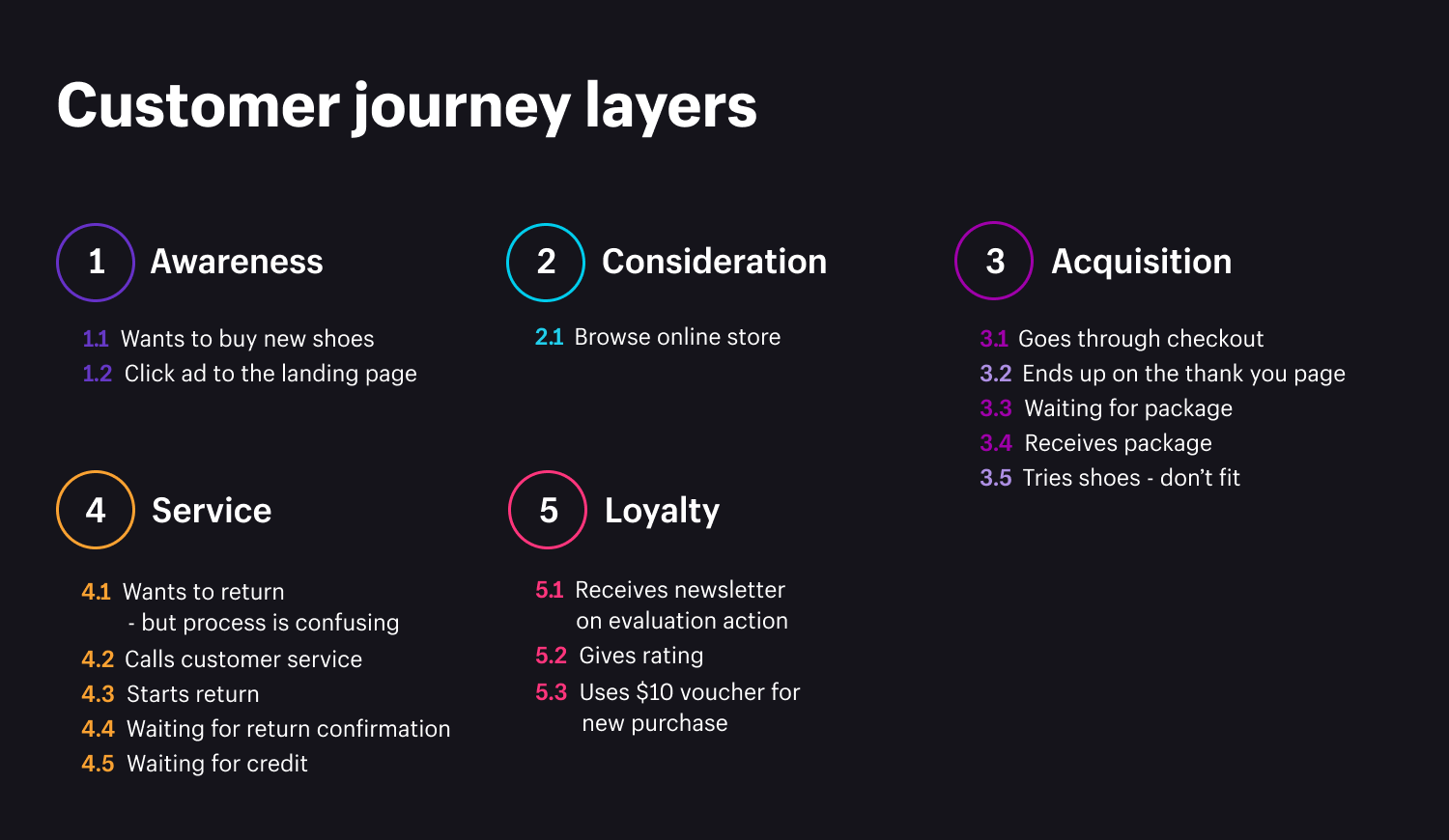 Image Source: shopify.in
Image Source: shopify.in
Customer journey mapping helps you to predict their expectations, requirements, pain points and much more. You are empowered to empathize correctly with your buyers and gain to the point feedback about your brand.
Gathering information from customer journey maps to glean actionable insights and implementing them to derive and develop engaging marketing campaigns, landing pages with higher conversion ratio and much more.
How to map customer journey?
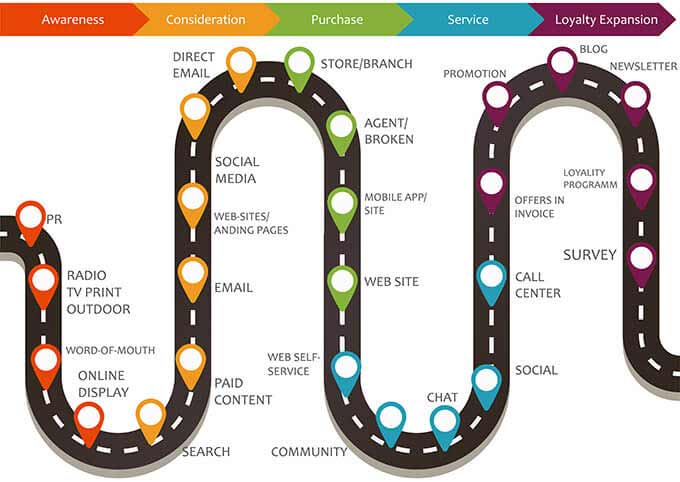 Image Source: invespcro.com
Image Source: invespcro.com
A connected and enhanced customer experience is when you have right products available when your customer wants them. Your eCommerce platform should answer their questions across all mediums, may it be a call center, online chat environment, ecommerce versus instore, or omnichannel.
6. SEO friendly digital catalogs
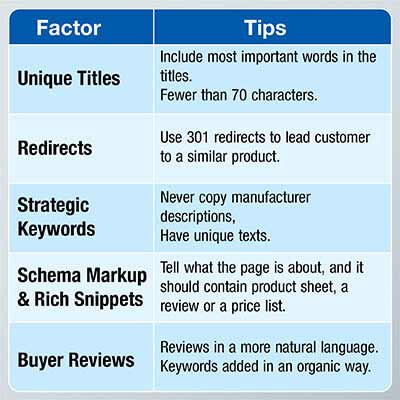
Creating eCommerce catalog keeping SEO in mind makes your products appear in the top results on Google, brings in organic traffic and offers the best-looking products to potential customers.
Keywords are the best ammo, but appropriate catalog structure results in traffic fetching content for search engines, accurate product data and diminishing costs.
Catalog structure organizes your content according to categories, subcategories, families and tags. It determines the ease with which your product is found on search engines like Google and Bing, ultimately enhancing customer experience.
7. Mobile friendly and optimized catalogs
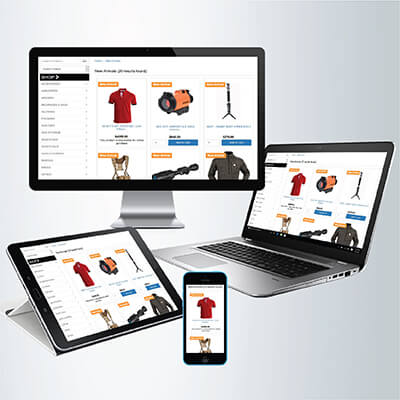
No matter how awesome your products are, or how beautifully you showcase them online, you are going to lose sales and have dissatisfied customers if your digital catalog is not mobile-friendly. The rules and regulations when designing mobile friendly catalogs are different.
To deliver great customer experience on mobile your eCommerce platform should:
- Large fonts to make product information readable without having to zoom it
- Use fonts that have optimal display on mobile screens
- Fewer products on each page enable you to have larger & HD quality product images
- Make CTAs pop out from background
- Have additional product information available with just a click
8. Accessibility of digital catalogs
Several readily available online tools can help you create a catalog befitting your brand. But mere creation of a catalog is not enough. Your catalog must meet customer expectations, convert visitors into sales and profitable returns.
Confirm, that the catalogs that you are using, to establish your brand reputation and increase revenue, are easily accessible and sharable over social media, media portals, catalog sharing sites and emails too.
Catalog customization attributes:
- Downloadable features
- Link highlights
- Multi-lingual text
- Right to left orientation
- Single & double-page layout options
Catalog accessibility attributes:
- Embeddable catalogs
- Downloadable PDF, GIF or animated flipbook formats
- Email-friendly
- Share catalog as video content
- Shareable on social media
Professional product catalog management service providers create mobile ready catalogs that are convertible to PDF or any other digital format and are HTML5 compliant.
Conclusion
Improvements to optimize your catalogs will prove to be key drivers to deliver enhanced customer experience and make them remember your brand. Optimizing your catalogs this way will make your consumers have quality information; helping them to decide what to buy and why; thus, improving their overall purchase experience.
The retail landscape has changed dramatically with more and more eCommerce consumers looking out for convenience, variety, and competitive pricing. Customer experience will determine which brand wins, and which one loses. Optimizing product catalogs for better customer experience (CX), is the key to success for eCommerce businesses in this digital age.
Catalogs are foundation of customer experience
Want your catalogs to drive traffic, drive conversions and improve CX?
Talk to us today »
HabileData is a global provider of data management and business process outsourcing solutions, empowering enterprises with over 25 years of industry expertise. Alongside our core offerings - data processing, digitization, and document management - we’re at the forefront of AI enablement services. We support machine learning initiatives through high-quality data annotation, image labeling, and data aggregation, ensuring AI models are trained with precision and scale. From real estate and ITES to retail and Ecommerce, our content reflects real-world knowledge gained from delivering scalable, human-in-the-loop data services to clients worldwide.

